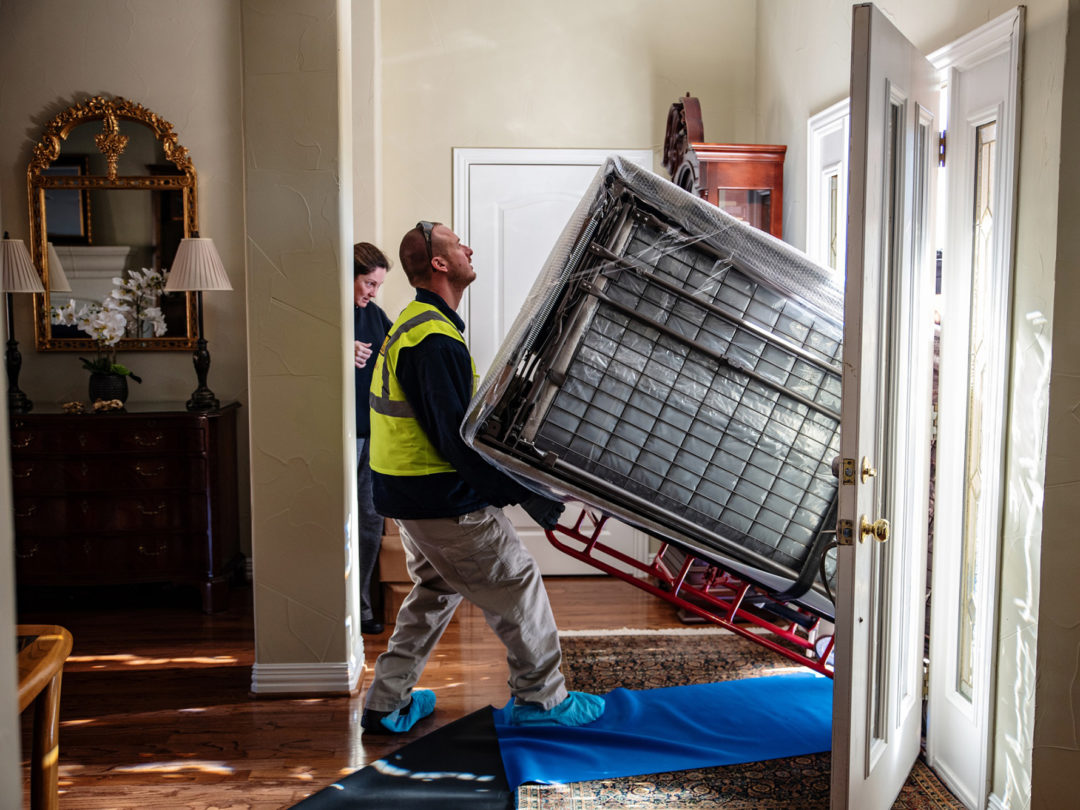
The coronavirus pandemic has kept everyone at home. Additionally, a reduction in commuting expenses and an injection of large sums of money into bank accounts (thanks to the federal government) has led to more disposable income.
The result? More shoppers, spending the majority of their time quarantined in their homes, buying more things, especially large and bulky items. For many, it’s time to acquire that new couch, make those home improvements that have been put off, buy that bigger-and-better large-screen television, and replace that worn-out, 18-year-old mattress.
However, the enthusiastic desire for more has crashed into serious reality. Namely, global supply chain delays have led to a domestic drought for big and bulky products. Even as pandemic restrictions loosen and logistics efforts ramp up, that news is not necessarily positive. When capacity for transportation services finally meets demand, we are going to see an unprecedented spike of big and bulky inventory on the domestic market. This, in turn, will put added pressure on last-mile delivery efforts, bringing massive delivery delays to transportation hubs just miles away from the customers they serve.
Being proactive can prevent you from being reactive. You can take steps to prepare for a potential flood of inventory, and prevent delays that might sink your last-mile strategy.
Swelling Risk
Where we are now didn’t just happen overnight. Rather, it was caused by a myriad of different factors that came together in a perfect storm.
Why are the items still stuck overseas? Demand for container drayage (delivery) services has outstripped supply, causing port congestion of unprecedented levels. With the time it takes for ships to return to origin growing longer and longer, available containers have grown scarce. Due to demand, container and drayage rates have rapidly increased and are often subject to bidding wars. And, once the big and bulky inventory arrives at domestic cross-docks, it is subject to sky-high truckload, LTL and intermodal rates. With premiums of several thousands of dollars, items are sitting as purchasing departments struggle with additional per unit increases.
When transportation rates spike, and the industry is flush with capital, existing providers add equipment and new providers enter the market. After major peaks, rates plateau then fall quickly, often accelerated by the additional capacity. And lower-cost big and bulky inventory, building like condensation in a developing thunderstorm, is about to break loose into a downpour when carriers scramble to move anything for revenue.
Warehouses, final-mile carriers and supply chains that focus on big and bulky have taken on other business during the drought. As a result, the capacity to absorb previous levels, let alone an influx of volume, doesn’t exist. The ensuing inventory flood promises to clog distribution centers and final mile carriers. Capacity allocated based on today’s levels will not be able to absorb the demand, further contributing to the inventory pileup.
Preparing for Delays
Consumers have been forgiving of overseas delays during the pandemic. However, they will not be as understanding if they have to wait weeks for an item that is sitting in a domestic warehouse just miles away. Given the high-end visibility of most aspects of the final-mile delivery journey in this day and age, any delays can threaten a retailer’s reviews, ratings and net promoter scores (NPS) will suffer. The following steps will help ensure timely delivery of big and bulky items.
Diversify your final mile strategy. Even if you are not affected by the previously mentioned factors, your partner carriers’ networks will be strained when their other customers dramatically increase volume. The time to onboard new providers is now. Carrier Requests For Information (RFI), contracts and implementation can take months and are incredibly challenging during peak seasons and times of increased volume. By partnering early, you are building a lasting relationship, not a quick band-aid.
Don’t worry about not checking off every box. Final mile and warehouse capacity exist in the market that doesn’t meet every requirement on your corporate checklist. It’s ok. If they can meet your legal, insurance and delivery requirements, take a second look at why you are excluding them.
Turn your store into a distribution center. If your final mile providers have hours of travel built into their first delivery, it reduces the number of deliveries in a day. An easy fix? Utilize your store inventory to create a mini distribution center for local delivery companies. Developing these capabilities in your retail space can help move products that much faster — less time on the road means more time to unload at your customer’s home. And as these activities are an extension of curbside pickup, you likely already have the resources in place.
Communicate with your warehouse providers. Do they have the space and workforce available to turn a massive influx of orders? If your providers have staffing issues now, what will happen when volume increases? Depending on those answers, you might need to find additional warehouse solutions.
Take advantage of the gig economy. Final-mile trucks are limited to the available equipment in the market. If your item can fit in a pickup truck, this can be an efficient source to meet your customer demands. Seek out local courier and delivery services that utilize gig economy driver pools to provide the extra capacity you need.
Ensure total consumer visibility. Choose a provider that offers your customers complete visibility and allows them to monitor final-mile delivery status with real-time tracking and direct communication. Consumer survey data shows that customers are more patient with delays when they are kept informed.
You don’t have to be helpless with the inevitable inventory onslaught. Build and maintain a flexible last-mile network, facilitate regular communication with providers, and don’t be afraid to diversify and look to unique solutions. Those with adaptable networks will not only survive but thrive during the challenges ahead. In short, preparing your boat now means you won’t be scrambling for sandbags or sump pumps later.
Craig Lough is a director at Dolly.







